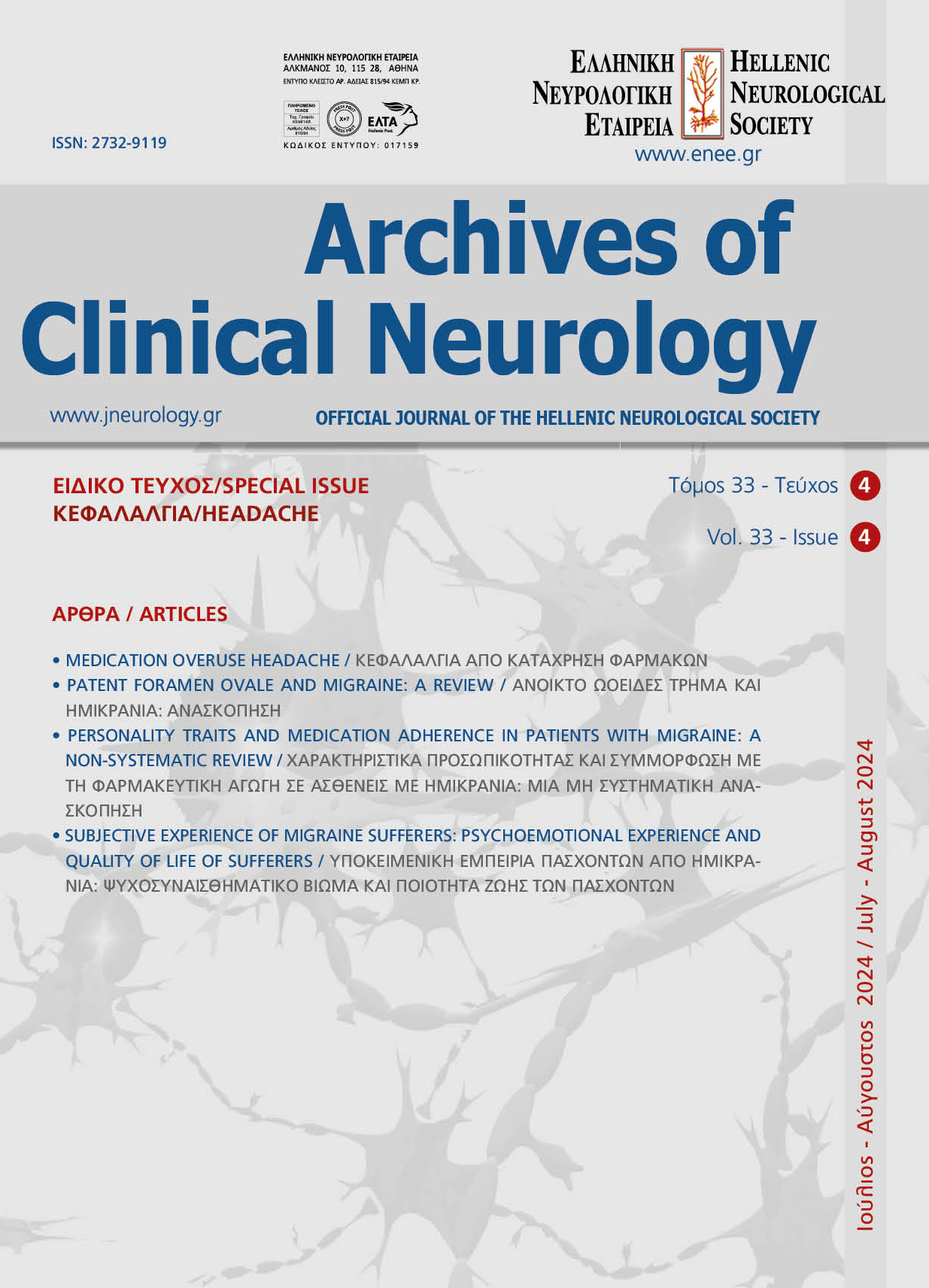PATENT FORAMEN OVALE AND MIGRAINE: A REVIEW
Keywords:
headache, migraine, migraine with aura, patent foramen ovale, right-to-left shuntAbstract
Introduction: Evidence exists in literature connecting a patent foramen ovale (PFO), a common cardiac
septal defect, with migraine. Understanding the potential relationship between PFO and migraine could
be crucial for developing effective management strategies. This narrative review aims to synthesize current
evidence on the connection between PFO and migraine, exploring epidemiological data, pathophysiological
mechanisms, and clinical and therapeutic implications.
Methods: A comprehensive literature search was conducted across multiple databases, including PubMed
and Cochrane Library, for studies published up to May 2024, using specific keywords and inclusion/
exclusion criteria.
Results: The prevalence of PFO is significantly higher in migraine patients, particularly those with migraine
with aura (MA), compared to the general population. The pathophysiology behind this interaction is not yet
clear; potential mechanisms linking PFO to migraine include right-to-left shunting, allowing microemboli or
vasoactive substances to enter cerebral circulation, altered cerebral hemodynamics, and common genetic
pathways. Clinical studies on the efficacy of PFO closure for migraine prevention have yielded mixed results,
with MA patients often seeing a significant improvement of their symptoms.
Discussion: While a higher prevalence of PFO in migraine patients and plausible pathophysiological
mechanisms support a potential link, the clinical benefits of PFO closure for migraine prevention remain
inconclusive in non-aura migraine. Further research is needed to identify patient subgroups that may
benefit from targeted interventions and to clarify the pathogenesis.


